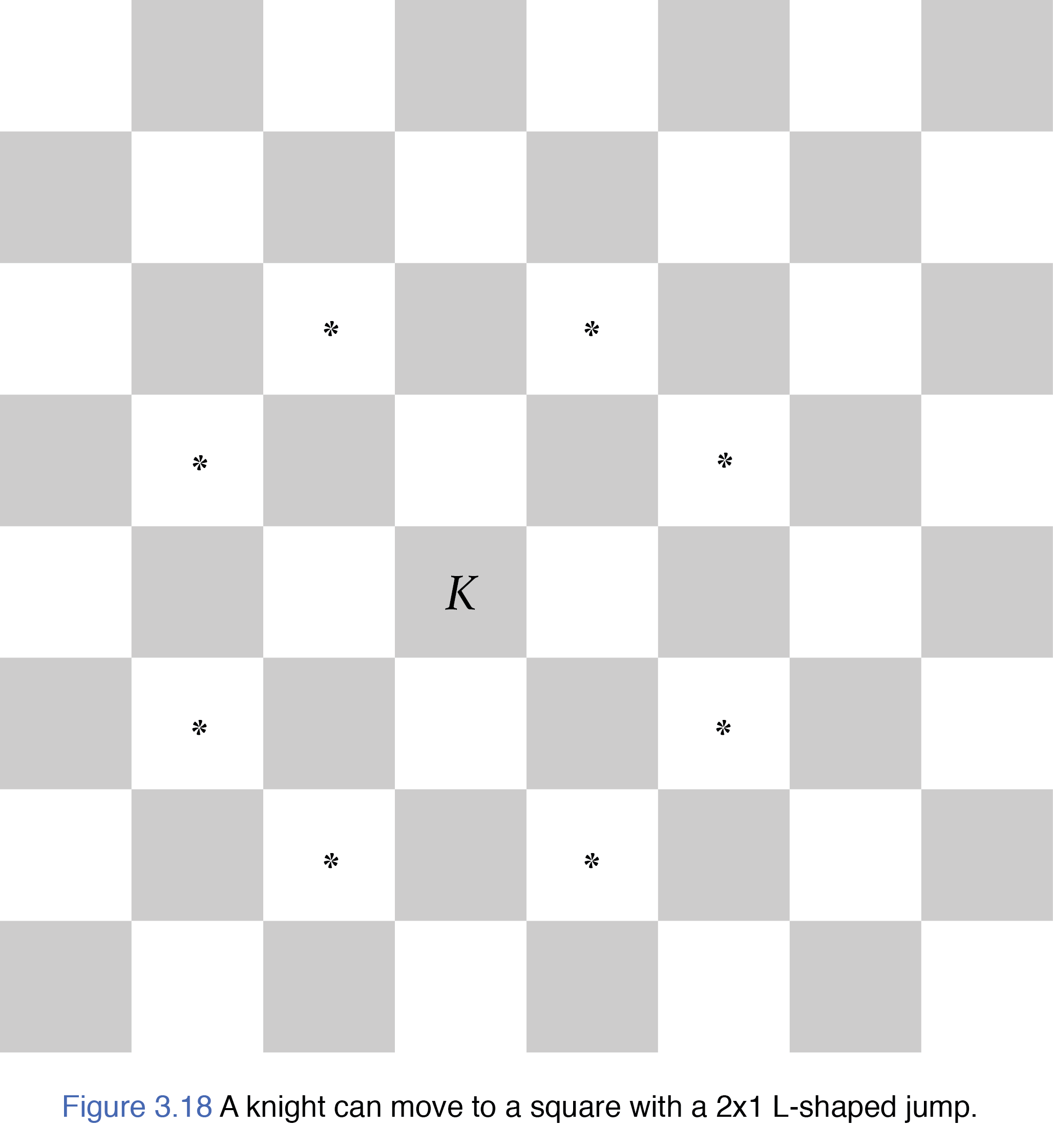Question
Inductive proofs are challenging but have many interesting applications. In this discussion, consider problem No. 24 from Section 3.4 in your textbook. In chess, a
Inductive proofs are challenging but have many interesting applications. In this discussion, consider problem No. 24 from Section 3.4 in your textbook. In chess, a knight moves by jumping to a square that is two units away in one direction and one unit away in another. For example, in Figure 3.18, the knight at K can move to any of the squares marked with an asterisk ().

How would you explain to someone using normal written language that a knight can move from any square to any other square on a chessboard? Write your explanation and share it with your classmates.
Then, how can you use induction to prove that a knight can move from any square to any other square on an n n chessboard via a sequence of moves for all n 4?
Figure 3.18 A knight can move to a square with a 2x1 L-shaped jumpStep by Step Solution
There are 3 Steps involved in it
Step: 1

Get Instant Access to Expert-Tailored Solutions
See step-by-step solutions with expert insights and AI powered tools for academic success
Step: 2

Step: 3

Ace Your Homework with AI
Get the answers you need in no time with our AI-driven, step-by-step assistance
Get Started


